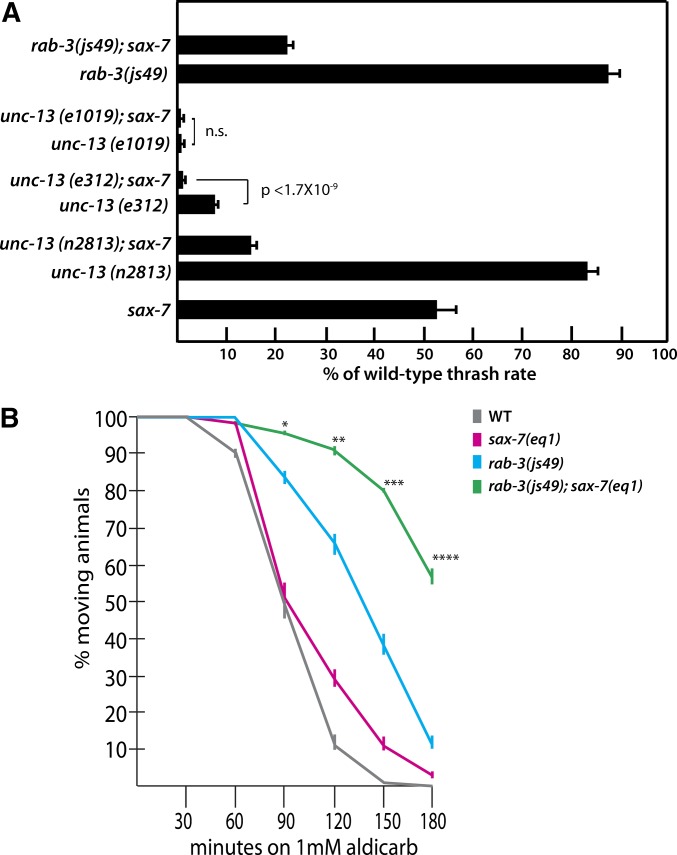Figure 5.
sax-7 genetically interacts with the neurotransmission genes, unc-13 and rab-3. (A) Quantitation of locomotion defects in unc-13; sax-7, rab-3; sax-7, and the corresponding single-mutant backgrounds via the thrashing assay, where the thrash rate (number of thrashes per minute) is represented as a percentage of the wild-type thrashing rate, which is 152.44 ± 6.9 thrashes per minute. Error bars show the standard error of the mean. n = 50 animals. Error bars show the standard error of the proportion of at least 12 sample sets, where n = 25 for each set. n.s., not significant. (B) A time-course response of wild-type and mutant strains on NGM media containing 1 mM Aldicarb. Controls include wild type (WT), which is sensitive to Aldicarb, and unc-29(e193), which is resistant to Aldicarb (data not shown) (Miller et al. 1996). Error bars show the standard error of the mean of 10 sample sets, where n = 25 animals for each set. *’s represent the P-values calculated by Student’s t-test, comparing rab-3; sax-7 Aldicarb resistance to that of rab-3. *P < 0.005, **P < 0.0005, ***P < 5 × 10−5, ****P < 5 × 10−7.

